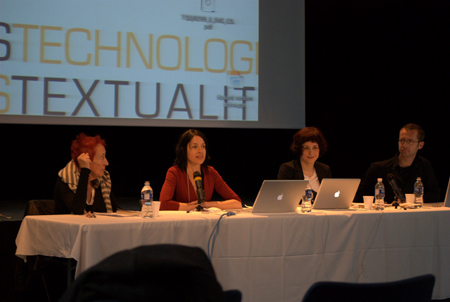Lecture by Joanne Lalonde

Web Art and Art History | CEIArtE.
New narrative identities and the figure of the double abound in web art. Since 1995, cybernauts have seen the creation of several fictional personalities to which they have become attached, among them the highly emblematic www.mouchette.org . What do these characters have to say? What do these fictional accounts tell us?
In media arts history, the interest in self-representation is pervasive. The arrival of various technologies on the market created the conditions to explore, in a different framework, the complex natures of subjectivity and of identity. Self discovery, measuring oneself with the world through the web, the video camera or simply a still camera, has been, and is still, among the constant concerns of artists. Be it through an obsession with self portraits, the fabrication of a fictional alter ego, or a mythography, these representations, conveyed through media arts thanks to realistic descriptive images, highlighting their effet de réel, install a particular relationship with the spectator, making him aware of his own condition as existential subject, but also of his status as cultural subject.
A considerable part of hypermedia art production follows this trend. Several pieces openly develop new narrative identities, use new representation strategies, or figures of the double. In fact, the web favourizes the spread of hoaxes of all kinds: multiple personalities, disorders, “marketing/merchandising/commercialising the body”, personal diaries where fiction and reality intermingle.
In the age of the post modern condition and of the tragic subject, extended between the multiple investigations of the self, the web appears today as the place where identities are more than ever dynamic and variable: identities of the subject, but also of media infrastructure and of genres. It’s the reign of mythography, a visual or literary script of the fantasmic projection of a subject, allowing him to multiply his identities, where the proposals are very often subversive and where they suggest, as far as the most daring are concerned, a critical redefinition of our convictions.
